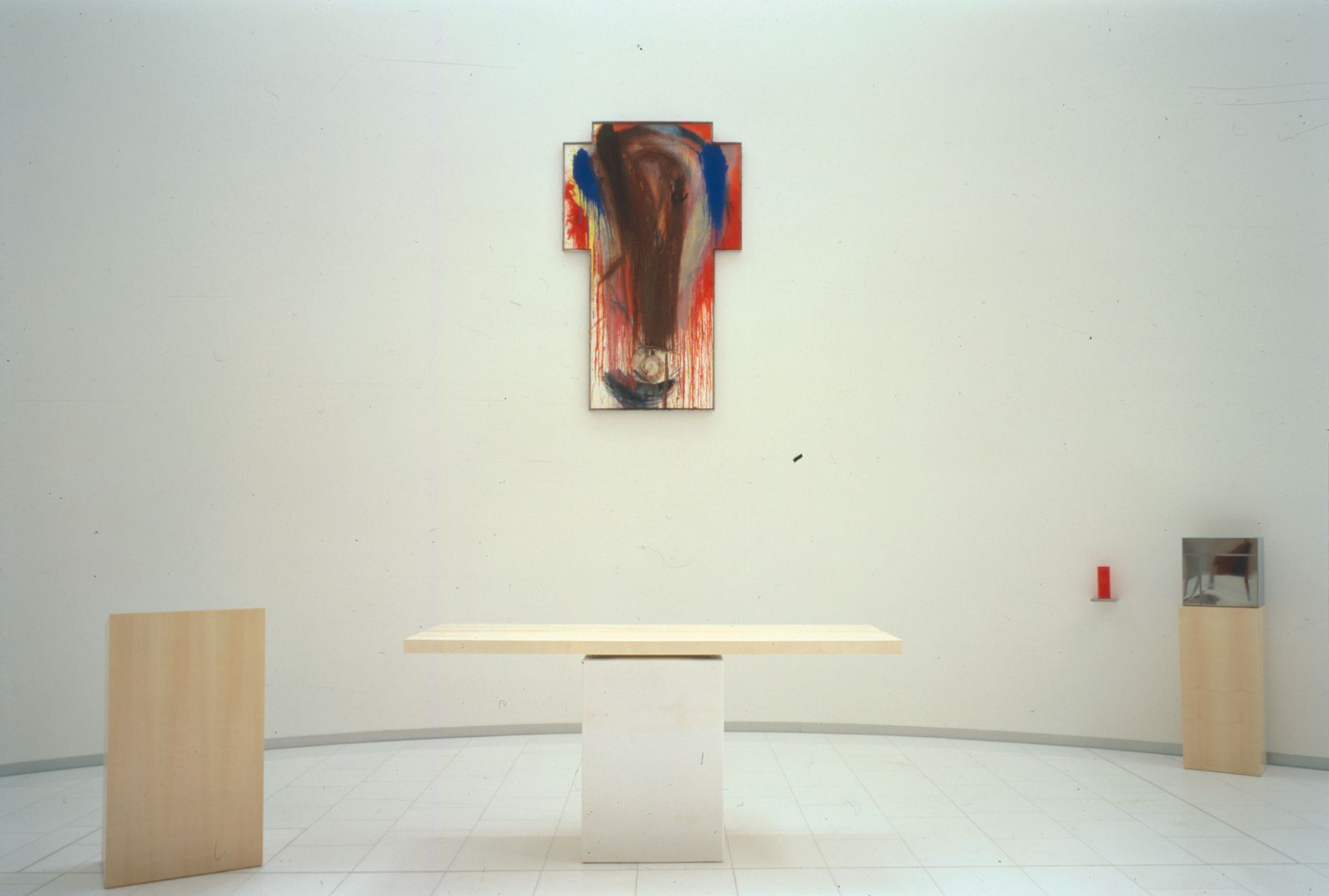Arnulf Rainer
:
Installation in the Government District
Back
Information
The two-stage competition provided the background to the artistic intervention in St. Pölten, for which seven artworks by Austrian artists were recommended for realisation. These projects are by Josef Danner, Bruno Gironcoli, Richard Hoeck, Hans Kupelwieser, Christoph Steffner, Thomas Stimm and Heimo Zobernig. Five commissions for interiors were awarded directly, to Gunter Damisch, Franz Graf, Brigitte Kowanz, Eva Schlegel and Walter Vopava. The winning project in a separate competition for the design of the chapel (1995) is by Arnulf Rainer. Additional existing artworks by Franz Xaver Ölzant, Oskar Putz and Ruth Schnell are also to be found in the Regierungsviertel. Works by Dara Birnbaum and Michelangelo Pistoletto, also selected by the first jury, are not realized.
In 1995 a further competition was held for the designing of the regional parliament building's chapel. Arnulf Rainer was the winner of this limited competition from which the jury selected two pieces. It was the jury's duty, however, to decide on the furnishing and design of the chapel in terms of coloring and lighting. In addition to the large painting "Schlangenkreuz" (Snake Cross) from 1987/88 which the artist submitted in the competitions, the artist created a smaller painting with an overpainted figure of Saint Leopold on the request of the client. He left the chapel completely white. Both the motif and the cross shape of the painting figure significantly in Arnulf Rainer's work. He has described the cross as our European history while at the same time always denying any personal religious identification with it. Accordingly, he has stated: "...these paintings do not claim to be a work made specifically for sacral rooms. They have very personal roots. They were promted by subjective emotion, with regard to the person, the event as well as the idea of the cross. ...It might also be added that the disputes on 'presence', 'representation', 'reference', etc. which were fought a hundred years ago in Christian churches have preoccupied me for a long time, since it was then that the 20th century art began developing. Today everything is more complex. A special brand of hedonism and spiritualism can no longer be excluded among artists anymore. Since I have recognized this, I want to undermine religious interpretations of my work..." (Arnulf Rainer, 1980).

